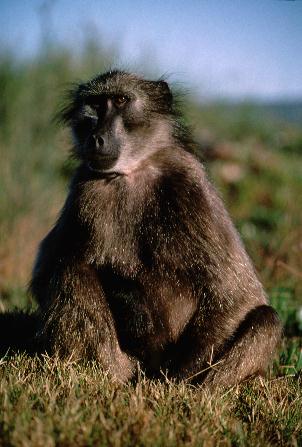primate_models_of_human_evolution
Go to:
Return to:
Department of Anthropology
Durham University
Dawson Building
South Road
Durham DH1 3LE
UK
Tel: +44 (0) 191 334 1601
Fax: +44 (0) 191 334 1614
[email protected]
Last updated
15th January 2021

Cercopithecine models as a contextual framework for human evolution

This interdisciplinary project with Professor Robin Dunbar (Oxford) and Dr Sarah Elton (HYMS) integrated behavioural and morphological aspects of cercopithecine biology to illuminate human evolutionary history. We compiled a database of variation in modern Cercopithecinae to examine the effects of environmental and geographic variation on morphological, genetic and behavioural variation in the Cercopithecinae. Variation, taxonomy and speciation in hominins could then be examined in the light of morphological and behavioural differences within and between populations of the same cercopithecine taxa and used to develop a conceptual model of hominin ecology to predict patterns of species distributions, extinctions and social evolution.
Our role in the project was to develop systems models for vervet monkeys using behavioural data and environmental variables from contemporary populations to describe patterns of variation in group size and composition. These models were tested with field data, and we were able to greatly extend the potential of the model through the incorporation of remote sensing data.
Publications:
Willems, E.P. & Hill, R.A.(2009) A critical assessment of two species distribution models taking vervet monkeys (Cercopithecusaethiops) as a case study. Journal of Biogeography36: 2300-2312 (pdf)
Willems, E.P., Barton, R.A. & Hill, R.A.(2009) Remotely sensed productivity, home range selection and local range use by an omnivorous primate. Behavioral Ecology, 20: 985-992(pdf)
Willems, E.P. & Hill, R.A. (2009) Predator-specific landscapes of fear and resource distribution: effects on spatial range use. Ecology, 90: 546-555 (pdf)
Sellers, W.I., Hill, R.A. & Logan B. (2007) Simulating group decision making in baboons using agent-based modelling. Philosophical transactions of the Royal Society of London, 362: 1699-1710 (pdf)
Sellers, W.I., Hill, R.A.& Logan B. (2005) Biorealistic simulation of baboon foraging using agent-based modelling. In: Bryson, J.J., Prescott T.J. & Seth, A.K. (eds.) Modelling natural action selection: Proceedings of an international workshop. pp. 127-134. AISB Press, Brighton (pdf)
Project Staff:
Dr Russell Hill – Durham University (Project Leader) (email)
Dr Erik Willems – Durham University
